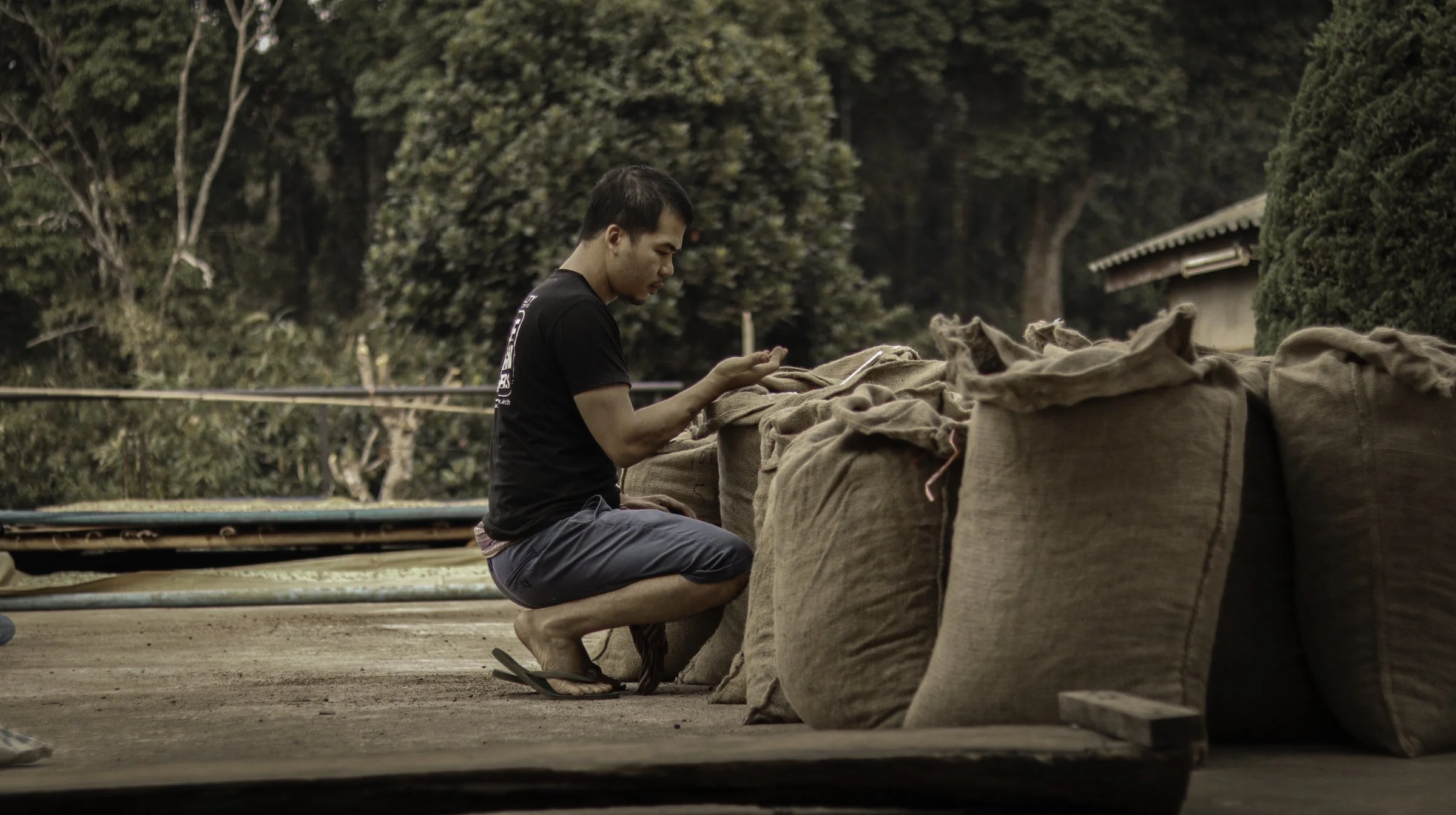SPECIALITY COFFEE
our cut, make the cup.
“Quality Control” is an interesting phrase… we can “control” the selection of the seed and the area in which it is grown. We can “control” the husbandry shown to the tree. However, we cannot “control” what Mother Nature throws at the tree during its production cycle!
“Quality Control” is not just about selecting only the best beans – it is also about selecting a quality consistent with the contract.
WASHED
Our Quality Controls
HONEY-WINE
Moisture level: All our contracts state the level of acceptable moisture in the bean prior to export. Not only do we have an allergy to paying for excessive water in our beans, too much moisture causes the coffee to become musty. In addition, if there is too much moisture coffee can sweat in a shipping container causing mould on the beans – a big problem.
Size matters: A sample is sifted to ensure that the correct percentage of bean size is present. The naked eye cannot detect 15% screen 17 in a screen 18 sample, but the screens can. Screen 17 is cheaper than screen 18 and whilst there will always be an agreed tolerance, too much is not only expensive for the buyer but not contractually correct. At the other end of the scale, too many extra big beans can also be an issue.
Appearance: A weighed sample is tipped onto the table and each bean is systematically checked for defects, colour, insect holes, maturity, damage plus any extraneous matter. The defects are tallied and checked against the contracted allowance. The overall colour and texture of the sample is noted.
Roasting: The beans are not over-roasted which helps imperfections show themselves when cupping. (If testing the coffee for various uses, we will roast it accordingly). The roasting is timed which helps to note variances in the beans, if they are lighter, denser, drier etc. … and the consistency of the roast is reported.
Cupping: The final frontier. Dependent upon quality and origin, beans are weighed into a minimum of 3 bowls to a maximum of 10 bowls. This ensures 1 bad bean will remain in 1 bowl, rather than being dispersed over all bowls. The groups are numbered and paired with a previous delivery as a “control sample”. The temperature of the coffee is noted prior to and after cupping. Once evaluated by the panel of cuppers, comments are discussed openly and the results noted.
Top quality
Only if the sample passes all of the above stages of “Quality Control” do we give our approval to the exporter to ship. It is tough but correct and fair. If the coffee arrives in Europe different to the contracted quality, it is too late and can cause untold hardship to all concerned.
The coffee is cleared into our preferred warehouse where the sacks are noted for condition and any potential damages advised. Samples are drawn from 30% of the consignment and sent to our offices for evaluation. Yes, you guessed it – we go through the complete “Quality Control” measures listed above AGAIN! Laborious? Yes. Necessary? Yes. As already stated, coffee is an agricultural product handled by people and occasionally things go wrong. Then starts the process of putting it right.
No coffee is delivered to a customer without having passed our “Quality Control”. You might not expect this level of control or know that these checks happen, but we believe they are essential. It means that you are buying your coffee from a trader who has cupped and handled every coffee they sell you. We know what we are delivering to you. We are real coffee people!





